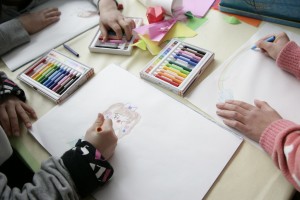Art Therapy for Children with Cerebral Palsy
What is Art Therapy? How Does it Help With Cerebral Palsy?
Cerebral palsy can have lasting effects for individuals born with the condition. Movement, coordination, speech, breathing and reflexes are some of the issues that these individuals have to contend with on a daily basis. Thankfully, art therapy may be effective treatment for certain conditions within the cerebral palsy umbrella.
Dysarthria & Speech Improvements

Art Therapy & Cerebral Palsy
Dysarthria is a common condition in cerebral palsy. This usually has to do with proper speech; due to weak muscles, individuals with cerebral palsy find it hard articulate normal speech. The muscles involved in creating speech don’t have the needed tone, making words vocalized by an individual with cerebral palsy seem unintelligible. A recent study published by the international medical journal of experimental and clinical research showed that 14 children who engaged in art therapy were able to experience marked improvement in their speech. The study also saw an improvement in the children’s volume, tempo control as well as pauses when they spoke. Art therapy also increased the children’s fluency after four months of therapy.
Art therapy puts children in a relaxed and creative space which is vital in the learning process as well as the adoption of new behaviors. At the same time, activities such as drawing, coloring, painting, sculpture making may help them forge stronger ties if done with other children.
Given the fact that children and adults with cerebral palsy primarily have issues with motor function, any activities such as dancing and acrobatics may help improve their muscle tone and enable them to grip, walk or push better, lessening the need to always use crutches or wheelchairs. Art inspires a sense of self-confidence and pride which eventually boosts the self image of an individual with cerebral palsy.
